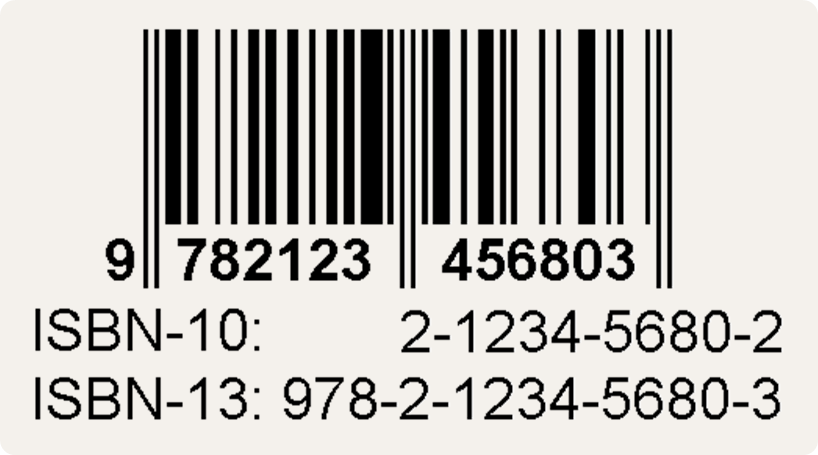In the ISBN-10 (International Standard Book Numbering) system that was used until the end of 2006, each book is assigned a unique 10-digit code. The first nine digits uniquely identify the book itself, whereas the last digit merely serves as a check digit to detect invalid ISBN-10 codes.

If $$x_1, \ldots, x_9$$ represent the first nine digits of an ISBN-10 code, the check digit $$x_{10}$$ is computed as \[ x_{10} = (x_1+ 2x_2+ 3x_3+ 4x_4+ 5x_5+ 6x_6+ 7x_7+ 8x_8+ 9x_9)\!\!\!\!\mod{11} \] As a result, the check digit $$x_{10}$$ always takes a value in between 0 and 10. If the check digit is equal to 10, it is represented by the uppercase letter X in the ISBN-10 code. As such, only a single character is needed to represent the check digit.
In the new ISBN-13 system, each book is assigned a unique 13-digit code. The first twelve digits uniquely identify the book itself, whereas the last digit merely serves as a check digit to detect invalid ISBN-13 codes. If $$x_1, \ldots, x_{12}$$ represent the first twelve digits of an ISBN-13 code, the check digit $$x_{13}$$ is calculated as \[\begin{align} o &= x_1 + x_3 + x_5 + x_7 + x_9 + x_{11} \\ e &= x_2 + x_4 + x_6 + x_8 + x_{10} + x_{12} \\ x_{13} &= (10 - (o + 3e)\!\!\!\!\mod{10})\!\!\!\!\!\mod{10}\end{align}\] As a result, $$x_{13}$$ always takes a value in between 0 and 9, so that ISBN-13 codes only contain digits.
Assignment
-
Write a function isISBN that takes a string $$c$$ (str). The function must return a Boolean value (bool) that indicates whether $$c$$ is a valid ISBN code. The function also has an optional second parameter isbn13 that may take a Boolean value (bool) indicating whether the function must check for an ISBN-10 code (False) or for an ISBN-13 code (True, default value).
-
Write a function areISBN that takes a list containing $$n \in \mathbb{N}$$ codes. The function must check for each code in that list if it's a valid ISBN code. The function also has an optional second parameter isbn13 that may take a Boolean value (bool) indicating whether the function must check for ISBN-10 codes (False) or for ISBN-13 codes (True).
If no value is explicitly passed to the parameter isbn13, the type of a code must be derived from its length. Codes that are no strings (str) are considered to be invalid by definition. Codes having length 13 must be checked as ISBN-13 codes and codes having length 10 must be checked as ISBN-10 codes. Codes having a length that deviates from 10 and 13 are considered to be invalid by definition.
The function must return a new list containing $$n$$ Boolean values (bool) that indicate whether the code at the corresponding position in the given list is a valid ISBN code.
Example
>>> isISBN('9789027439642', False)
False
>>> isISBN('9789027439642', True)
True
>>> isISBN('9789027439642')
True
>>> isISBN('080442957X')
False
>>> isISBN('080442957X', False)
True
>>> codes = ['0012345678', '0012345679', '9971502100', '080442957X', 5, True, 'The Practice of Computing Using Python', '9789027439642', '5486948320146']
>>> areISBN(codes)
[False, True, True, True, False, False, False, True, False]
>>> areISBN(codes, True)
[False, False, False, False, False, False, False, True, False]
>>> areISBN(codes, False)
[False, True, True, True, False, False, False, False, False]
Ask Pythia …
In the following instruction video, Pythia explains how to tackle this assignment. Watch this video as a stepping stone to solve other exercises about advanced functions and modules1.